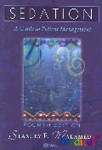Written by an acknowledged expert in the field, the book draws
on a wealth of clinical experience and ability.
Combines all aspects of sedation with essential theoretical and
technical instruction.
Techniques are divided into sections on pharmacology,
armamentarium, and technique and complications - described in
explicit detail that allows it to be used as a chairside
reference.
Pharmacosedation is covered in full, with discussions of oral,
rectal, and IM premedication, as well as nine chapters on
inhalation sedation and ten chapters on IV sedation.
Covers all of the components required by the ADA guidelines:
review of cardiovascular and respiratory physiology; selection
of agents; techniques of administration; and management of
complications and emergencies.
Step-by-step descriptions of inhalation sedation (nitrous oxide
and oxygen) and intravenous sedation provide a superb
clinical "picture" of the procedures.
Chapters on pediatric, geriatric and physically and medically
compromised patients offer valuable, up-to-date information on
the management of these special needs patients.
In-depth discussions of the pharmacology of commonly used
sedative agents allow the reader to fully understand properties
and characteristics of drugs used.
Part One: Introduction
1. Pain and Anxiety in Dentistry
Part Two: Spectrum of Pain and Anxiety Control
2. Introduction to Conscious Sedation
3. The Spectrum of Pain and Anxiety Control
4. Physical and Psychological Evaluation
5. Monitoring During Conscious Sedation
6. Non-Drug Techniques: Iatrosedation and Hypnosis
Part Three: Oral, Rectal, and Intramuscular Sedation
7. Oral Sedation
8. Rectal Sedation
9. Sublingual, Transdermal, and Intranasal Sedation
10. Intramuscular Sedation
Part Four: Inhalation Sedation
11. Historical Perspective
12. Pharmacosedation: Rationale
13. Pharmacology, Anatomy, and Physiology
14. Armamentarium
15. Inhalation Sedation: Techniques of Adminstration
16. Inhalation Sedation: Complications
17. Contemporary Issues Surrounding Nitrous Oxide
18. Practical Considerations
19. Teaching Inhalation Sedation: History and Present Guidelines
Part Five: Intravenous Sedation
20. Historical Perspective
21. Intravenous Conscious Sedation: Rationale
22. Armamentarium
23. Anatomy for Venipuncture
24. Venipuncture Technique
25. Pharmacology
26. Techniques of Intravenous Conscious Sedation
27. Complications
28. Practical Considerations
29. Guidelines for Teaching
Part Six: General Anesthesia
30. Background
31. Armamentarium, Drugs, and Techniques
Part Seven: Emergency Preparation and Management
32. Preparation for Emergencies
33. Emergency Drugs and Equipment
34. Management of Emergencies
Part Eight: Special Considerations
35. The Pediatric Patient
36. The Geriatric Patient
37. The Medically Compromised Patient
38. The Physically Compromised Patient
39. Neurologic Illnesses and Other Conditions


